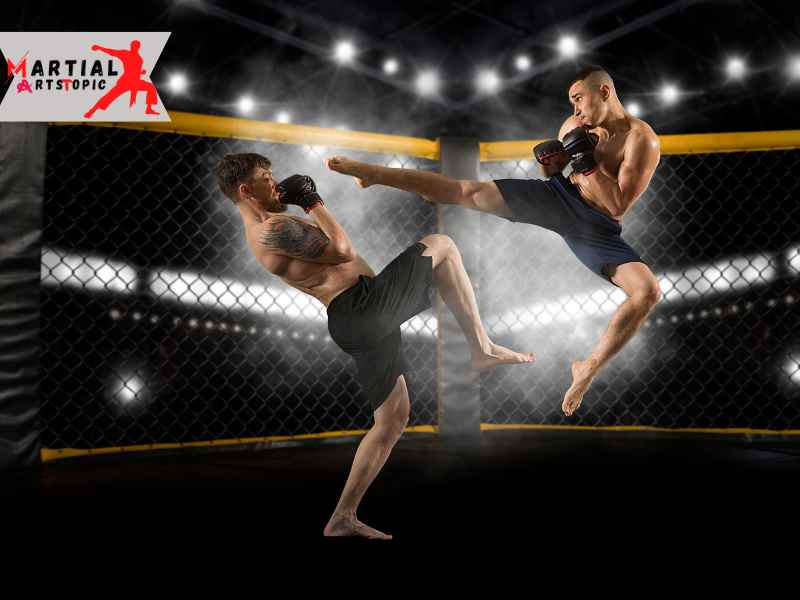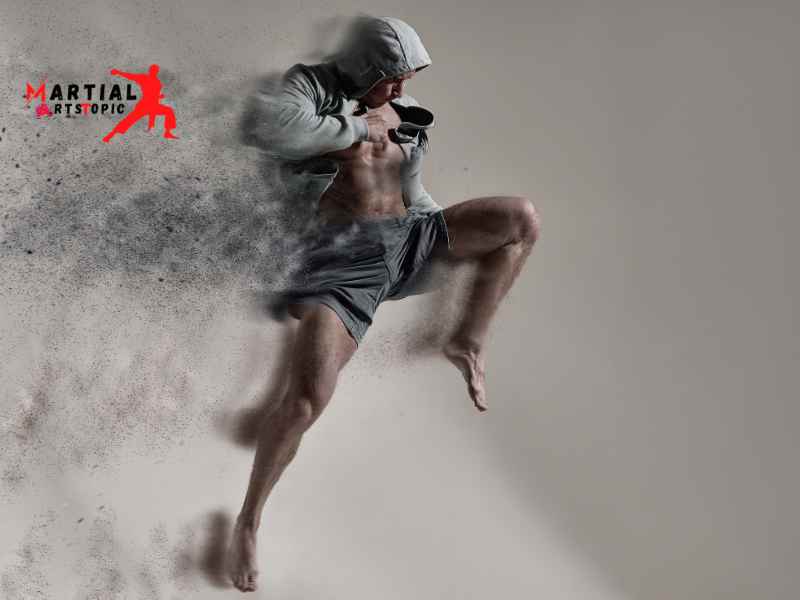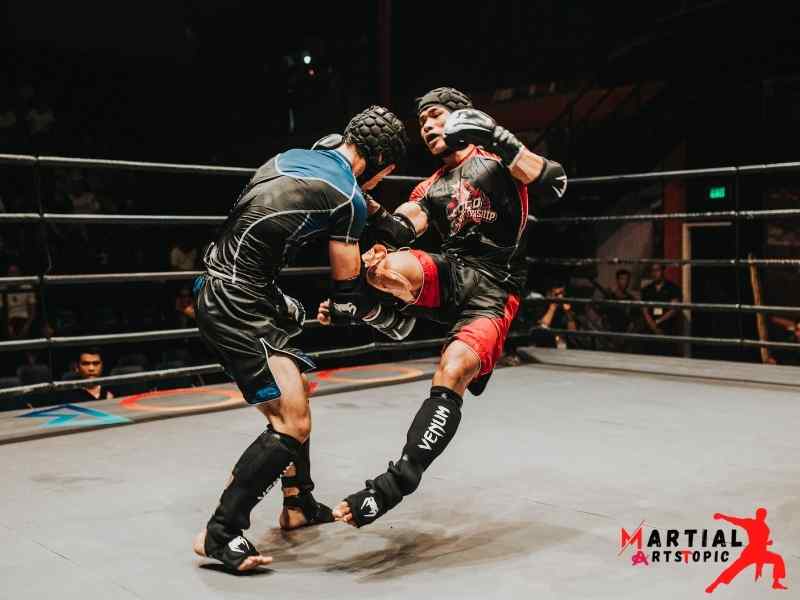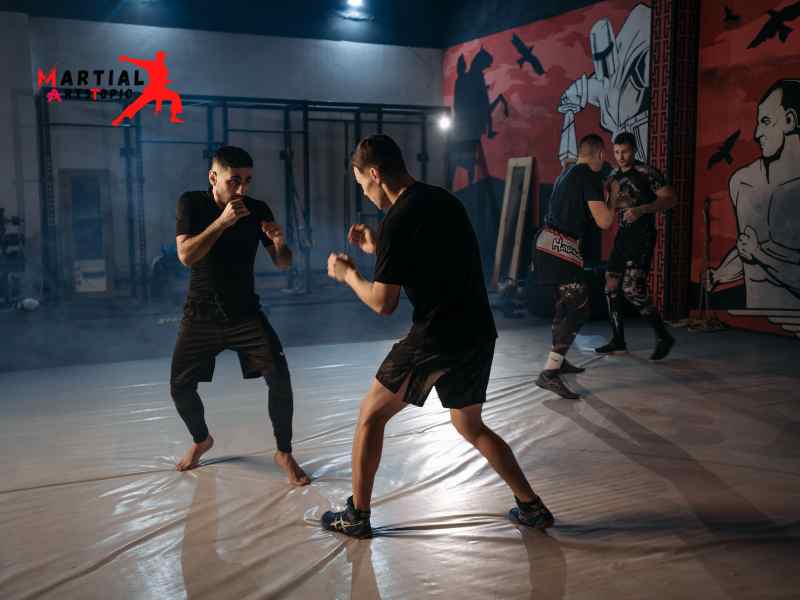
A Beginner’s Guide to Understanding MMA Fighting
MMA Fighting Mixed Martial Arts, more commonly known as MMA, has gained immense popularity in recent years. With high-intensity fights and skilled athletes, MMA fights have captivated audiences worldwide. If you’re new to this thrilling combat sport, this beginner’s guide will help you understand the basics of MMA fighting.
What is MMA?
MMA is a full-contact combat sport that allows a wide range of fighting techniques from various martial arts disciplines. It combines elements of striking (such as punches, kicks, and knee strikes) with grappling and ground fighting (such as holds, locks, and submissions). The goal in an MMA fight is to either knockout your opponent, force them to submit, or win by decision.
Understanding the Octagon
MMA fights take place inside an Octagon, a unique structure with eight sides. The Octagon is designed to give fighters ample space to showcase their skills while ensuring safety. The fenced enclosure prevents fighters from falling out while allowing spectators to have a clear view of the action from any angle.
Weight Classes
In order to ensure fair competition, MMA it divided fights into different weight classes. This categorization allows fighters to compete against opponents of similar size and weight. The most common weight classes in MMA include straw weight, flyweight, bantamweight, featherweight, welterweight, middleweight, light heavyweight, and heavyweight.
Striking Techniques
Striking is a fundamental aspect of MMA fighting. Fighters use a variety of punches, kicks, elbows, and knee strikes to attack their opponents. Striking techniques in MMA are derived from various martial arts disciplines, such as boxing, Muay Thai, and taekwondo. It is crucial for fighters to have a good understanding of striking techniques to effectively land powerful blows and defend against attacks.
Grappling and Ground Fighting
Grappling and ground fighting play a significant role in MMA. Fighters utilize techniques from Brazilian Jiu-Jitsu, wrestling, and judo to take their opponents down, gain control, and submit them. Ground fighting involves various holds, locks, and submissions, including chokes, arm bars, and leg locks. Understanding grappling techniques is essential for both offensive and defensive strategies in MMA fights.
Fight Strategies
MMA fights require fighters to have a well-rounded skill set and the ability to adapt to different situations. Strategy plays a crucial role in determining the outcome of a fight. Some fighters prefer to keep the fight standing, utilizing striking techniques, while others focus on taking the fight to the ground, relying on their grappling skills. Successful fighters often have a combination of striking and grappling expertise, allowing them to switch strategies depending on the opponent’s strengths and weaknesses.
Training and Conditioning
MMA fighters undergo rigorous training and conditioning to prepare for fights. Training typically includes a combination of striking practice, grappling drills, cardio exercises, strength training, and sparring sessions. Conditioning is essential to build endurance, strength, and agility, as MMA fights can be physically demanding and require a high level of fitness.
Safety and Regulations
While MMA fights can be intense, and physically challenging, safety is of utmost importance. Organizations such as the Ultimate Fighting Championship (UFC) and Bellator have implemented strict rules and regulations to protect fighters. Referees closely monitor fights to ensure fair play and stop the match if necessary to prevent serious injuries.
The Evolution of MMA: From Its Origins to Modern-Day Fights
The Evolution of MMA: From Its Origins to Modern-Day Fights Mixed Martial Arts (MMA) fights have become a global phenomenon, captivating audiences with their intense display of skill, power, and athleticism. But have you ever wondered how this thrilling combat sport came to be? In this blog post, we will take a thorough analysis of the evolution of MMA, tracing its origins and exploring its transformation into the modern-day fights we know and love.
Origins of MMA

I can trace MMA back to ancient times, where various forms of hand-to-hand combat were practiced. In ancient Greece, the sport of Pankration emerged, combining elements of boxing and wrestling. Fighters would engage in brutal battles, utilizing both striking and grappling techniques to defeat their opponents.
Fast forward to the early 20th century, and the concept of MMA fights began to take shape. In Brazil, the Gracie family revolutionized the sport by developing Brazilian Jiu-Jitsu (BJJ), a martial art that focused on ground fighting and submission holds. This marked a significant shift in fighting styles, as BJJ practitioners showcased the effectiveness of grappling techniques against larger and stronger opponents.
The Birth of the UFC
The Ultimate Fighting Championship (UFC) was founded in 1993, marking a pivotal moment in the evolution of MMA. The UFC aimed to determine the most effective martial art by pitting fighters from different disciplines against each other. This created a platform for fighters to showcase their skills and test their abilities in a no-holds-barred environment.
Initially, the rules of the UFC were minimal, allowing fighters to use any technique they deemed necessary to win. This raw and unregulated form of MMA fights attracted both die-hard fighting enthusiasts and skeptics alike, sparking intense debates about the sport’s legality and safety.
Regulation and Rule Changes
As MMA fights gained popularity, regulatory bodies stepped in to establish rules and ensure the safety of the fighters. They introduced the Unified Rules of Mixed Martial Arts in 2000, setting guidelines for weight classes, permissible strikes, and prohibited techniques. These rules helped legitimize the sport and attract a wider audience.
With the implementation of rules, MMA fights became more strategic and tactical. Fighters had to adapt their training methods and develop a well-rounded skill set to excel in the sport. The evolution of MMA fights was not just about brute force but also about technique, conditioning, and mental fortitude.
The Rise of MMA as a Mainstream Sport
In recent years, MMA fights have exploded in popularity, becoming a mainstream sport with a dedicated fan base. Promotions like the UFC, Bellator, and ONE Championship have played a significant role in elevating the sport’s profile and attracting top-tier athletes from around the world.
Modern-day MMA fights are a spectacle to behold, with fighters combining striking, grappling, and submission techniques to outmaneuver their opponents. The sport has developed into a highly technical and strategic battle, where athletes continuously push the boundaries of human capability.
The Most Memorable Moments in MMA History
The Most Memorable Moments in MMA History Mixed Martial Arts (MMA) fights have always been a captivating spectacle for sports enthusiasts around the world. Over the years, there have been numerous unforgettable moments that have left a lasting impact on both fighters and fans alike. From stunning knockouts to incredible displays of skill and determination, these moments have shaped the history of MMA.
Anderson Silva’s Front Kick (UFC 126)
One of the most iconic moments in MMA occurred during UFC 126, when Anderson Silva faced off against Vitor Belfort. In the first round of the fight, Silva delivered a beautifully executed front kick to Belfort’s face, resulting in a knockout victory. This move showcased Silva’s incredibly striking ability and left the audience in awe.
Conor McGregor’s Double Champ Status (UFC 205)
We know Conor McGregor for his brash personality and undeniable talent inside the octagon. At UFC 205, McGregor made history by becoming the first fighter to hold two championship belts simultaneously in different weight classes. This feat solidified McGregor’s status as one of the greatest fighters in MMA history.
Ronda Rousey’s Armbar Streak
Ronda Rousey’s dominance in the women’s bantamweight division was unmatched during her prime. Rousey’s signature move, the armbar, became her trademark as she successfully applied it in multiple fights, often finishing her opponents in the first round. This streak solidified Rousey as one of the most feared fighters in MMA history.
The Diaz vs. McGregor Rivalry
The rivalry between Nate Diaz and Conor McGregor is one age. Their first bout at UFC 196 was an instant classic, with Diaz submitting McGregor in the second round. The rematch at UFC 202 was equally thrilling, with McGregor narrowly edging out Diaz in a five-round war. The intensity and skill displayed by both fighters during these fights left an indelible mark on MMA history.
The Rise of Jon Jones
Someone widely regarded Jon Jones as one of the greatest fighters in MMA history. His dominance in the light heavyweight division was unparalleled, as he defended his title multiple times against top-ranked opponents. Jones’ unorthodox style, coupled with his athleticism and versatility, made him a force to be reckoned with inside the octagon.
The WEC 48 Battle
I will forever remember WEC 48 for the epic showdown between Leonard Garcia and Chan Sung Jung, also known as “The Korean Zombie.” This fight showcased the heart and determination of both fighters as they engaged in a back-and-forth war that had the crowd on their feet. The fight was eventually awarded the “Fight of the Year” honors and solidified both fighters’ legacies.
Matt Hughes’ Slam KO
In a fight against Carlos Newton at UFC 34, Matt Hughes executed one of the most spectacular knockouts in MMA history. As Newton locked in a triangle choke, Hughes lifted him and slammed him on the canvas, rendering Newton unconscious. They etched this incredible display of strength and technique into the memories of MMA fans worldwide.
These are just a few of the many memorable moments that have shaped the history of MMA. From jaw-dropping knockouts to intense rivalries, the sport continues to captivate audiences with its raw athleticism and unparalleled excitement. As MMA continues to evolve, one can only imagine the amazing moments that lie ahead, waiting to be etched into the annals of history.
Different Fighting Styles in MMA

Different Fighting Styles in MMA: Exploring the Art of Mixed Martial Arts Fights Mixed Martial Arts (MMA) fights are one of the most exciting and unpredictable spectacles in the world of combat sports. What makes MMA so captivating is the wide variety of fighting styles that are showcased inside the octagon. From striking to grappling, each fighter brings their own unique style and techniques to the game. The different fighting styles in MMA, highlighting the strategies and skills employed by these warriors.
Striking Styles
Striking forms the foundation of any successful MMA fighter’s arsenal. Some of the most popular striking styles seen in MMA include:
- Boxing: Known as the sweet science, boxing focuses on punches and footwork. Boxers excel in using their hands to deliver devastating blows while evading their opponent’s attacks.
- Muay Thai: Hailing from Thailand, Muay Thai is a striking style that emphasizes the use of elbows, knees, kicks, and clinching techniques. We know Muay Thai fighters for their powerful strikes and devastating combinations.
- Kickboxing: Combining elements of both boxing and traditional martial arts, kickboxing allows fighters to use punches, kicks, and knee strikes. Kickboxers are adept at utilizing a range of strikes from different angles.
Grappling Styles
Grappling involves close combat techniques such as holds, locks, chokes, and takedowns. These grappling styles play a crucial role in MMA fights, enabling fighters to control their opponents on the ground. Some prominent grappling styles in MMA include:
- Brazilian Jiu-Jitsu (BJJ): Developed from traditional Japanese Jiu-Jitsu, BJJ focuses on ground fighting and submission holds. BJJ practitioners excel in using leverage and technique to overcome larger and stronger opponents.
- Wrestling: Wrestlers have a strong background in takedowns, throws, and ground control. Their ability to dictate where the fight takes place often gives them a significant advantage in MMA.
- Judo: With its emphasis on throws and trips, judo provides fighters with powerful techniques to take down and control opponents. We know judo practitioners for their ability to quickly transition from striking to grappling.
Hybrid Styles
As MMA developed, fighters started blending multiple fighting styles to create their unique hybrid approaches. These fighters adopt a combination of striking and grappling techniques, exploiting their opponents’ weaknesses while capitalizing on their strengths. Some of the most notable hybrid styles in MMA include:
- Freestyle: Freestyle fighters are versatile and well-rounded, proficient in both striking and grappling. They possess the ability to adapt to various fighting styles, making them unpredictable and dangerous opponents.
- Karate: Karate fighters bring a dynamic striking style to the octagon, utilizing fast punches, kicks, and evasive footwork. They often employ elusive movement to counter their opponents’ attacks.
- Taekwondo: Known for its high-flying kicks, taekwondo fighters excel in utilizing their legs to generate power. They often employ flashy and acrobatic techniques, catching their opponents off guard.
The Ultimate Fighter: MMA Fight Preparation and Training
MMA fights have gained remarkable popularity over the years, captivating audiences with their intense display of skill, technique, and raw physicality. Behind every successful MMA fighter lies a rigorous training regimen that prepares them to face their opponents inside the cage.The world of MMA fight preparation and training, uncovering the essential aspects that transform fighters into loyal warriors.
Setting the Foundation: Physical Conditioning
Physical conditioning is the cornerstone of MMA fight preparation. Fighters must possess exceptional strength, endurance, and the ability to withstand the grueling demands of the sport. Intense cardio workouts, weight training, and plyometric exercises are incorporated into their training routines to enhance their overall athletic performance.
Mastering the Art of Striking
Striking is a crucial aspect of MMA fights, encompassing disciplines such as boxing, Muay Thai, and kickboxing. Fighters focus on perfecting their striking techniques, including punches, kicks, elbows, and knees. Through relentless practice, they develop exceptional, striking speed, accuracy, and power, enabling them to effectively combat their opponents in the heat of battle.
The Art of Grappling: Wrestling and Brazilian Jiu-Jitsu
MMA fighters must also possess exceptional grappling skills to dominate their opponents on the ground. Wrestling and Brazilian Jiu-Jitsu play pivotal roles in this aspect of fight preparation. Wrestlers train to control their opponents, execute takedowns, and defend against takedowns. Brazilian Jiu-Jitsu provides fighters with the necessary skills to submit their opponents through various joint locks and chokeholds.
Mental Fortitude: Developing a Warrior Mindset
MMA fights are not just physical battles; they are mental challenges as well. Developing a warrior mindset is fundamental to overcoming adversity inside the cage. Fighters engage in mental training techniques, such as visualization, meditation, and mindfulness, to strengthen their focus, concentration, and mental resilience. This mental fortitude allows them to stay composed, make split-second decisions, and adapt to changing fight scenarios.
Sparring and Fight Simulation
No MMA fight preparation is complete without sparring and fight simulation. Sparring sessions allow fighters to put their skills to the test in a controlled environment, mimicking the intensity and unpredictability of actual fights. These sessions not only improve technical abilities but also enhance fighters’ ability to strategize and react under pressure. Regular fight simulations help fighters refine their fight strategies and adapt to various fighting styles.
Nutrition and Recovery
Proper nutrition and recovery play a vital role in optimizing an MMA fighter’s performance. Fighters adhere to a strict diet plan that supports their training goals, providing the necessary fuel and nutrients for muscle growth, repair, and recovery. Adequate rest, massage therapy, and other recovery techniques are also incorporated to ensure the body and mind recuperate between training sessions, reducing the risk of injuries.
The Future of MMA Fights
The Future of MMA Fights: A Glimpse into the Evolution of Combat Sports Mixed Martial Arts (MMA) fights have come a long way since their inception. From underground brawls to a widely recognized and respected sport, MMA has captured the attention of millions around the world. As we look to the future, it’s clear that the landscape of MMA fights is set to undergo significant changes, shaping the way we experience combat sports. In this blog post, we will explore the exciting developments and trends that are shaping the future of MMA fights.
Evolution in Training and Technique

One of the key factors driving the future of MMA fights is the continuous evolution of training methods and techniques. Athletes are constantly pushing the boundaries, exploring new ways to improve their skills and gain a competitive edge. From traditional martial arts disciplines to groundbreaking strength and conditioning programs, fighters are leaving no stone unturned in their quest for excellence.
With advancements in sports science and technology, fighters are using data-driven approaches to optimize their performance. They are leveraging analytics and wearable devices to track vital metrics, such as heart rate, speed, and power output. This data provides valuable insights into their training and allows for targeted improvements in specific areas.
Furthermore, the integration of disciplines such as boxing, Brazilian Jiu-Jitsu, wrestling, and Muay Thai has led to the development of well-rounded fighters who possess a diverse skill set. As the sport continues to develop, we can expect to see fighters become even more versatile, blurring the lines between different martial arts styles.
Rise of Women in MMA
Another significant aspect of the future of MMA fights is the increasing prominence of women in the sport. Over the past decade, female fighters have gained widespread recognition, proving their skills and athleticism inside the octagon. Fighters like Ronda Rousey, Amanda Nunes, and Valentina Shevchenko have become household names and have shattered gender stereotypes in combat sports.
As the popularity of women’s MMA continues to grow, we can expect to see more opportunities and platforms for female fighters. This will not only provide a platform for talented athletes, but also inspire young girls to pursue their dreams in the world of martial arts.
Technological Innovations and Fan Engagement
They do not limit the future of MMA fights to the fighters themselves; it also extends to the way fans engage with the sport. Technological innovations are revolutionizing the spectator’s experience, bringing fans closer to the action than ever before.
Virtual reality (VR) and augmented reality (AR) technologies are being used to create immersive experiences, allowing fans to feel like they are right in the middle of the octagon. From 360-degree live streams to interactive fan forums, these advancements are transforming how we consume and interact with MMA fights.
Furthermore, social media platforms provide a direct line of communication between fighters and fans. The rise of platforms like Instagram, Twitter, and YouTube has allowed fighters to build their personal brands and connect with their audience on a more personal level. This level of engagement not only creates a loyal fan base but also opens up new revenue streams for fighters through sponsorships and endorsements.
Global Expansion and Cross-Promotion
The future of MMA fights also lies in its global expansion and cross-promotion opportunities. As the sport continues to gain traction worldwide, we can expect to see more international talent competing on a global stage. Organizations like the UFC (Ultimate Fighting Championship) have been at the forefront of this movement, organizing events in various countries and promoting fighters from different cultural backgrounds.
Cross-promotion between MMA organizations is also becoming more prevalent. This allows for dream matchups between fighters from different promotions, providing fans with exciting and unique matchups. This trend is not only beneficial for the fighters but also for the growth and exposure of the sport as a whole.
5 Most Memorable MMA Fights of All Time
Mixed Martial Arts (MMA) has seen its fair share of epic battles throughout history. From jaw-dropping knockouts to intense grappling exchanges, these fights have left a lasting impression on fans around the world. In this blog post, we will take a trip down memory lane and revisit the 5 most unforgettable MMA fights of all time, where fighters left it all in the octagon. So, put on your gloves and get ready to relive the excitement!
The Thrilling Slugfest: Forrest Griffin vs. Stephan Bonnar (The Ultimate Fighter Season 1 Finale)
In 2005, two relatively unknown fighters, Forrest Griffin and Stephan Bonnar, stepped into the octagon to compete for a contract with the UFC. Little did they know that their fight would go down in history as one of the most exciting and influential battles in MMA. Both fighters showcased incredible heart, determination, and an unwillingness to give up, resulting in a back-and-forth brawl that had the crowd on their feet. We often credit this epic showdown with propelling MMA into the mainstream.
The Rivalry Reaches Its Peak: Anderson Silva vs. Chael Sonnen (UFC 117)
Anderson Silva, considered one of the greatest fighters in MMA history, faced a fierce challenge from Chael Sonnen in their highly anticipated bout at UFC 117. Sonnen dominated Silva for four and a half rounds, showcasing his superior wrestling skills. However, with just two minutes left in the fight, Silva launched an incredible triangle choke, forcing Sonnen to tap out. This comeback victory solidified Silva’s legacy and left fans in awe of his ability to snatch victory from the jaws of defeat.
The Iconic Knockout: Dan Henderson vs. Michael Bisping (UFC 100)
UFC 100 marked a milestone event in MMA history, and the fight between Dan Henderson and Michael Bisping became the epitome of a knockout. Henderson landed his trademark right hand “H-Bomb” with sheer precision, sending Bisping crashing to the canvas spectacularly. This unforgettable moment not only secured Henderson’s place in MMA history, but also became one of the most replayed knockouts in the sport.
The Battle of Legends: Chuck Liddell vs. Wanderlei Silva (UFC 79)
When two legendary fighters like Chuck Liddell and Wanderlei Silva step into the cage, fans expect nothing but fireworks. At UFC 79, these two icons of the sport delivered an absolute war. For three rounds, both fighters traded heavy shots, showcasing their iron will and determination. The fight ended in a unanimous decision victory for Liddell, but the real winners were the fans who witnessed this legendary clash.
The Unforgettable Upset: Matt Serra vs. Georges St-Pierre (UFC 69)
In one of the biggest upsets in MMA history, Matt Serra shocked the world by defeating the dominant champion Georges St-Pierre at UFC 69. Serra, a heavy underdog, unleashed a barrage of strikes that caught St-Pierre off guard, leading to a first-round knockout victory. This fight proved that in MMA, anything can happen on any given night, and it solidified Serra’s place in the history books.
In conclusion
MMA fights are a thrilling and dynamic display of skill, strength, and strategy. The sport captivates audiences around the world with its intense battles and compelling narratives. From the disciplined training to the adrenaline-filled moments inside the octagon, MMA fighters push themselves to the limit, showcasing their dedication and determination. Whether it’s the technical prowess of grappling or the raw power of striking, each fight tells a unique story and leaves a lasting impression. MMA fights continue to develop and gain popularity, attracting a diverse fan base and inspiring new generations of fighters. As this electrifying sport continues to grow, we can expect even more unforgettable moments and legendary matchups in the future.
